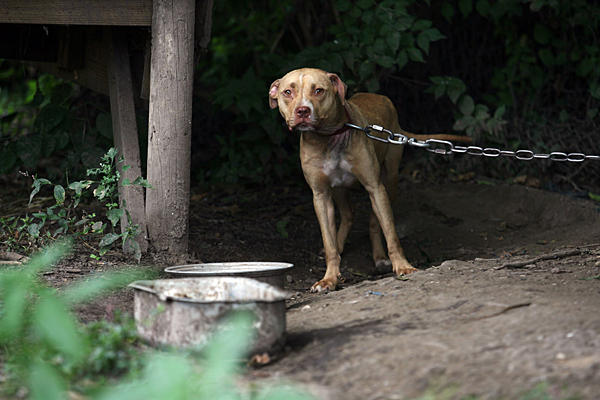In the world of canine activities, dog pulling—often seen in various cultural contexts—has ignited a contentious debate about its ethical implications. Is it an endearing display of a dog’s strength and agility, imbued with cultural significance? Or does it cross the line into the realm of animal cruelty? The answer to this nuanced question is complex and demands a thoughtful examination of both perspectives.
Historically, dog pulling has roots in practical tasks. Breeds such as the Siberian Husky or the Alaskan Malamute were originally bred for their capability to haul sleds across icy terrains. For these dogs, pulling a sled was not merely a pastime; it was a means of survival, intricately tied to the lifestyle of the communities they served. This reflects a symbiotic relationship between humans and dogs, a calculated partnership that has endured through generations.
However, the transition of dog pulling from a utilitarian function to a competitive or recreational sport raises critical ethical questions. The cultural significance attributed to the practice cannot be denied—it is often steeped in tradition, celebrating the intrinsic bond between human and canine. Communities across the globe host pulling contests, providing an arena for showcasing the prowess and endurance of both the animals and their trainers. Despite its festive atmosphere, the line between celebration and exploitation can become blurred.
Proponents of dog pulling argue that it promotes physical fitness for dogs, encouraging bonding between owner and pet. In their view, it cultivates discipline and enhances the dogs’ mental acuity. They claim that the act of dog pulling harnesses instinctual behaviors, allowing dogs to engage in activities that build natural skills. To pet owners, the joy aroused from witnessing their dogs excel in this endeavor is immeasurable. The camaraderie and pride fostered by competing in such events provide both human and canine participants with a sense of community and belonging. However, one must question: at what cost does this tradition persist?
On the other side of the spectrum lies a growing voice of concern regarding the welfare of these animals. Critics argue that dog pulling often leads to physical and psychological strain. Long hours of training and competition can exacerbate health problems, including joint injuries and respiratory complications. Moreover, the pressure to perform may cause anxiety in dogs that are not inherently suited for such strenuous activities. The competitive framework, while ostensibly celebratory, may veer towards exploitative as dogs are pushed beyond their capacities for the sake of victory or entertainment.
The veterinary community has begun to weigh in on this pressing issue. Experts elucidate that such high-stress environments can result in behavioral anomalies stemming from fear or discomfort. Dogs, much like humans, express emotions. Witnessing an animal suffering—or even just appearing uninterested—during what is purported to be a joyous activity cannot be overlooked. As pet guardians and community members, we must operate under the principle of “do no harm.” While some dogs genuinely revel in pulling, it is crucial to recognize that not all dogs share this inclination, thus raising further ethical dilemmas.
Across cultural landscapes, dog pulling takes various forms, each wrapped in its own context. In some cultures, it may represent an enduring legacy of resilience and strength, whereas in others, it may signify a troubling trend towards commodifying animal abilities. As global awareness of animal rights expands, the dialogue surrounding such practices must evolve. Societal attitudes are shifting; more individuals advocate for animal welfare, demanding alternatives that prioritize the humane treatment of animals in competitive settings.
Can this deep cultural tradition adapt? Indeed, it must. One potential pathway forward could involve innovations in the way dog pulling is conducted, prioritizing safety and well-being. For example, the implementation of strict guidelines regarding training regimens and competition standards could help mitigate the risks posed to the participants. Flexible weight classes, duration limits, and regular health evaluations could foster a more supportive environment, emphasizing fun and camaraderie rather than cutthroat competition.
Moreover, public awareness campaigns can illuminate the emotional and physical needs of these dogs. Educating communities on handling techniques and the importance of canine consent in activities can empower pet owners to make informed choices about their pets’ involvement in such sports. By fostering a culture of respect for animal autonomy, society can draw a distinction between celebration and exploitation.
Ultimately, the question of whether dog pulling constitutes animal cruelty or cultural tradition is not easily answered with a definitive resolution. It necessitates a balanced perspective that values tradition while simultaneously honoring the animals that enrich our lives. As we navigate the complexities entwined with this practice, the focus must remain on compassion and the ethical treatment of all living beings. In doing so, we may preserve cherished traditions without compromising the welfare of our beloved companions.
In conclusion, as we strive to forge a harmonious future for humans and animals alike, perhaps it is time to reframe our narratives around cultural practices. By fostering understanding and advocating for dog welfare, we can navigate the line between honoring tradition and ensuring the dignity of every dog participating in pulling—ultimately committing ourselves to a more compassionate society.








